Leaf Rusts of Hardwoods and Needle Rusts of Conifers
Cedar - Apple Rust - Gymnosporangium juniperi-virginianae
Cedar - Hawthorn Rust - Gymnosporangium globosum
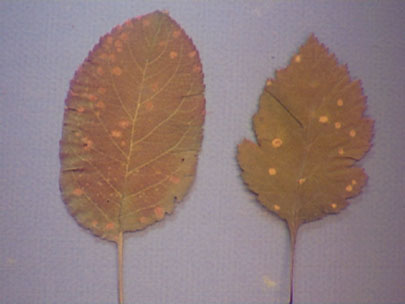
Pycnia on top surface of apple and hawthorn leaves.
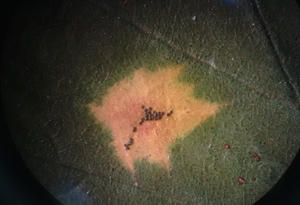
The small dots on this hawthorn leaf are pycnia. These will produce pycniospores in pycnial fluid that attacts insects.
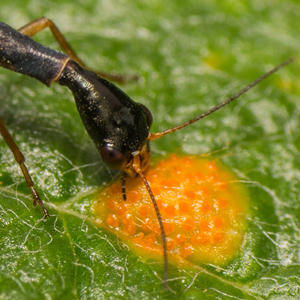
Pycnia of Gymnosporangium on apple leaf with pycnial fluid and insect that is attracted to the sweet fluid. Insects move the pycniospores from one leaf to another and bring pycniospores from one mating type to the opposite mating type on another leaf.
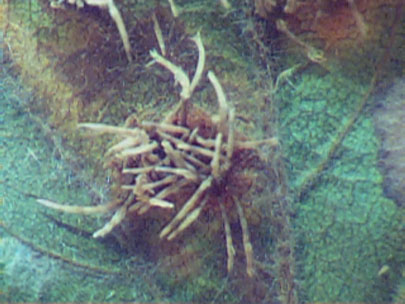
After fertilization, new hypahe with two nuceli per cell grow through the leaf and produce aecia on bottom of leaf.
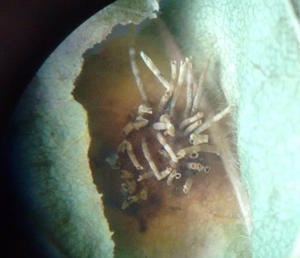
Another view of the aecia showing their tubular structure. The aecia are filled with aeciospores. These spores are wind disseminated and infect nearby junipers.
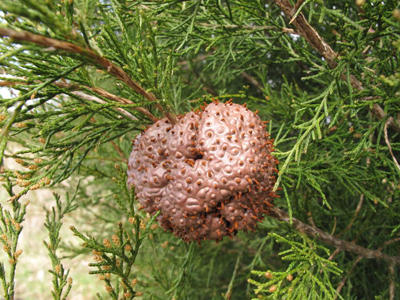
After infection with cedar-apple rust, galls form on the juniper. The following spring the telial columns or telial horns are formed. Telia can be seen just starting to emerge from the gall.
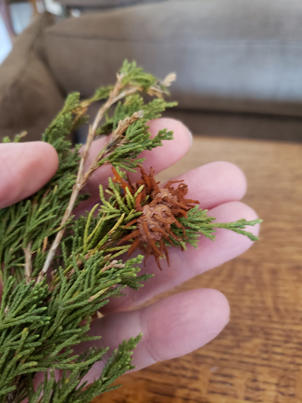
Telia expand during wet weather in the spring.
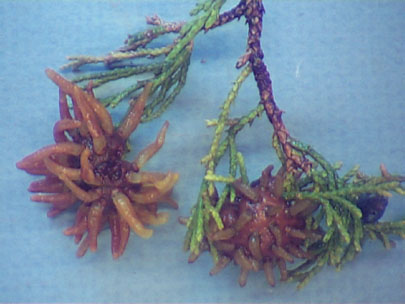
Telial horns expanding.
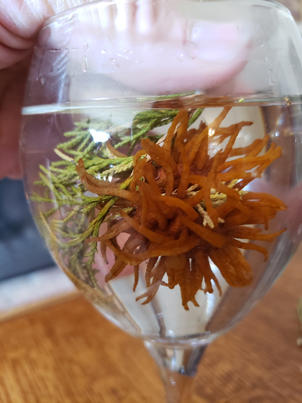
Telial horns contain teliospores that remain in the telia and are not disseminated.
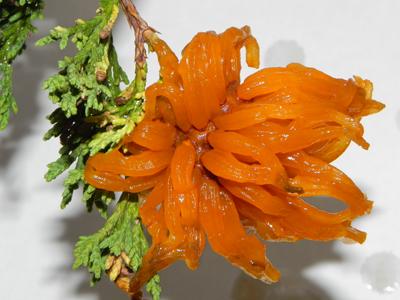
A fully formed and expanded group of telia on juniper.
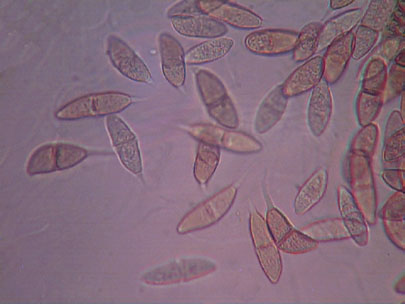
The teliospores of Gymnosporangium are two celled. These spores produce a basidium-like structure that produces 4 basidiospores.
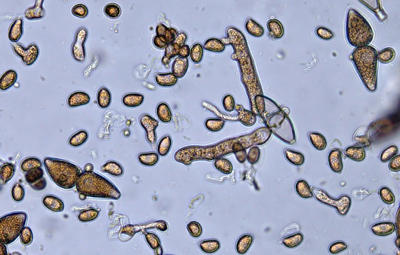
Teliospores producing basidia and basidiospores. You can see the two celled teliospores, basidia coming out of a teliospore and lots of small oblong basidiospores.
Quince Rust - Gymnosporangium clavipes
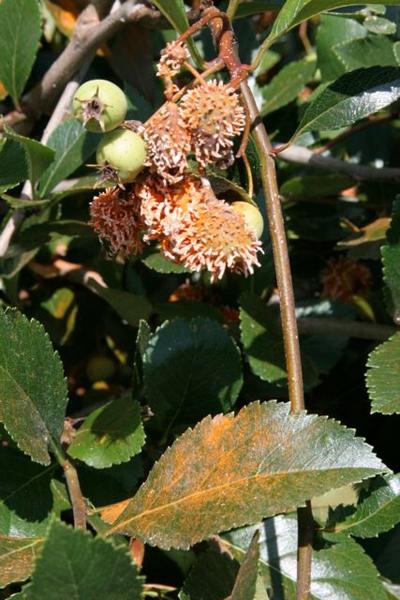
Aecia on the fruits of Hawthorn caused by Quince Rust. In Minnesota, Hawthorn serves as a host for this rust (in the south, quince serves as a host). On ornamental hawthorn infection occurs mostly on the fruits where pycnia and aecia are formed.
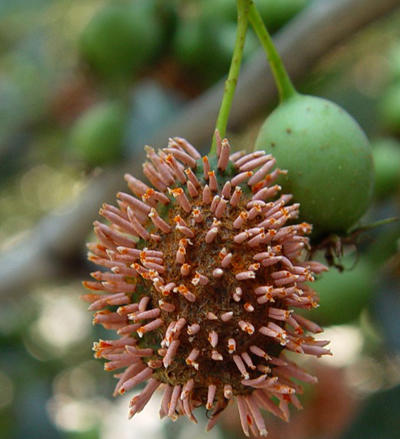
Aeciospores are produced inside the tube-like aecia on the hawthorn fruit. Pycnia form before and can be seen on the fruit in the background (small dots).
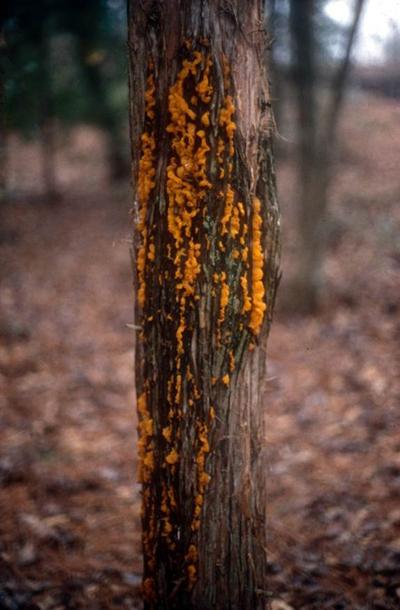
On junipers, the telia of Quince Rust are produced on swollen infected stems and even the main trunk of the junipers.
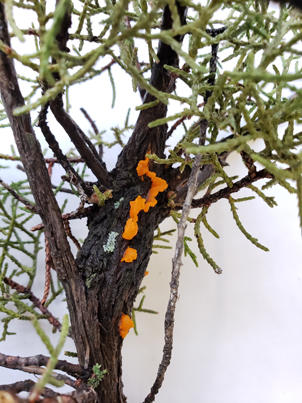
Telia of Quince Rust produced on a swollen branch.
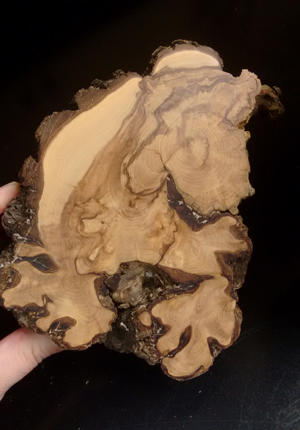
A cross section of a juniper limb infected with Quince Rust. The rust can persist in the juniper branch or main stem for years causing swellings and cankers.
Another species of Gymnosporangium produces a broom rust on junipers. This is presented on the "Broom Rust Web Page"